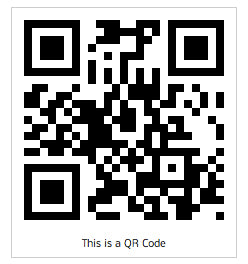Secure Checkout. FREE SHIPPING for Continental U.S. Orders over $60.
Menu
-
- Home
-
About Us
-
The Approach
-
Linking Language & Literacy
-
Professional Learning
-
Learning Resources
-
SHOP
-
Blog
-
- About MindWing
- Our People
- Contact Us
- Your Account
- Login
-
United States (USD $)

Secure Checkout. FREE SHIPPING for Continental U.S. Orders over $60.
Using QR Codes for Spooky Narrative Development
by Sean Sweeney October 24, 2011 3 min read
Over on my blog SpeechTechie this month, I am discussing in a series of posts the incredibly useful technique of using QR codes in language interventions. QR codes, which look like this....

...were born in the world of marketing (you may have seen them on ads about town) but are making their way into educational settings as an attention-grabbing tool. QR codes can be created very easily and printed, then scanned with free apps available for your smartphone or iPad. When scanned, the app will show text that you entered or a link to a website, depending on how you created the code. The result is an engaging process of discovery in which the student, instead of being presented a simple block of text, or shown a picture or website, participates in a little “peekaboo” moment in which the stimulus item is presented after scanning the code. Very cool.
QR codes lend themselves to be used in scavenger hunts in which a child locates the codes you have hidden around the classroom, therapy center, or wherever. They also lend themselves to story mapping, as a story can be broken down into text elements and printed as QR codes, one for character/setting, one for kickoff, and so on.
Given the season, I thought it would be fun to provide you with a Halloween lesson you can use right away that incorporates QR codes. You will first want to install a free app (click here for links to apps and a demo) on your smartphone or iPad that you can use to scan codes and display results. Presented below is a favorite ghost story of mine, “The Bus Stop,” modified from Alvin Schwartz’s Scary Stories 3: More Tales to Chill Your Bones (a great resource for more short scares). Click on each of the links below and you will navigate to a webpage with a QR code image. Print it from your web browser (File>Print) and be sure to make a notation on the back of the print-out so you don’t lose track of what is what. Save them in an envelope for use next year too! When scanned, each of the codes will display the text linked below. This would be a great lesson to accompany the Story Grammar Marker complete episode map, and perhaps inspire students to create their own ghost stories using SGM to help them organize their narratives. Here goes!
If you’d like to think about how to break down other stories and make your own QR codes, check out my post and video demo on SpeechTechie. It is MUCH easier than you think!
Sean Sweeney
Sean Sweeney, MS, MEd, CCC-SLP, is a speech-language pathologist and technology specialist working in private practice at the Ely Center in Needham, MA, and as a clinical supervisor at Boston University. He consults with local and national organizations on technology integration in speech and language interventions. His blog, SpeechTechie (www.speechtechie.com), looks at technology “through a language lens.” Contact him at sean@speechtechie.com.
Leave a comment.
Comments will be approved before showing up.






